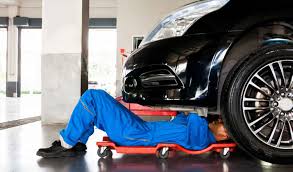
Car accidents are an unfortunate reality of modern life, kfz gutachter düsseldorf often leaving individuals bewildered and overwhelmed by the aftermath. One crucial aspect of dealing with car accidents is assessing the damage incurred. Whether it’s a minor fender-bender or a major collision, understanding how to accurately assess car damage is essential for insurance claims, repair estimates, and ensuring roadworthiness. In this comprehensive guide, we delve into the intricacies of car damage assessment, providing invaluable insights for drivers, insurance professionals, and automotive enthusiasts alike.
Understanding the Types of Car Damage: Car damage can manifest in various forms, each requiring a distinct approach to assessment and repair. Broadly categorized, car damage includes:
- Structural Damage: Structural damage affects the core framework of the vehicle, compromising its integrity and safety. This type of damage often results from high-impact collisions and may include bent frames, crumpled chassis, or misaligned components.
- Exterior Damage: Exterior damage primarily pertains to the vehicle’s body panels, such as dents, scratches, and paint damage. While often cosmetic, exterior damage can sometimes conceal underlying structural issues and should be thoroughly inspected.
- Mechanical Damage: Mechanical damage encompasses issues with the vehicle’s mechanical systems, including the engine, transmission, suspension, and brakes. Even seemingly minor accidents can cause hidden mechanical damage, necessitating a comprehensive assessment by qualified technicians.
- Electrical Damage: Modern vehicles are equipped with sophisticated electrical systems that control various functions, from entertainment features to safety systems. Electrical damage can result from accidents, causing malfunctions in lights, sensors, and other electronic components.
Assessment Techniques and Tools: Accurate car damage assessment requires a combination of visual inspection, diagnostic tools, and expertise. Here are some essential techniques and tools utilized in the assessment process:
- Visual Inspection: Begin by conducting a thorough visual inspection of the vehicle, carefully examining each area for signs of damage. Look for misalignments, cracks, dents, and other abnormalities that may indicate underlying issues.
- Diagnostic Scanners: Diagnostic scanners are invaluable tools for identifying electronic and mechanical issues in modern vehicles. These scanners can retrieve error codes, assess sensor functionality, and pinpoint areas requiring attention.
- Frame Measuring Systems: For assessing structural damage, frame measuring systems are indispensable. These precision tools enable technicians to accurately measure deviations in the vehicle’s frame and chassis, facilitating precise repairs.
- Paint Thickness Gauges: Paint thickness gauges are utilized to measure the thickness of paint layers on vehicle panels. Discrepancies in paint thickness can indicate previous repairs or hidden damage that may not be visible to the naked eye.
- Compression Testers: In cases where engine damage is suspected, compression testers are employed to assess the health of the engine cylinders. This diagnostic tool helps determine if the engine has sustained internal damage due to a collision.
Documentation and Reporting: Once the assessment is complete, documenting the findings is crucial for insurance claims and repair purposes. Detailed reports should include:
- Description of Damage: Provide a detailed description of all observed damage, including its location and severity.
- Photographs: Supplement the written report with photographs documenting the damage from multiple angles.
- Diagnostic Results: Include diagnostic test results, such as error codes, measurements, and any other relevant data.
- Repair Recommendations: Offer recommendations for repairs based on the assessment findings, including estimated costs and timelines.
Conclusion: Mastering the art of car damage assessment is a valuable skill that empowers individuals to navigate the aftermath of accidents effectively. By understanding the types of damage, employing appropriate assessment techniques and tools, and meticulously documenting the findings, drivers can ensure a smooth claims process and expedite repairs. Whether you’re a seasoned mechanic or a novice driver, embracing these principles will undoubtedly enhance your ability to assess car damage with precision and confidence.
